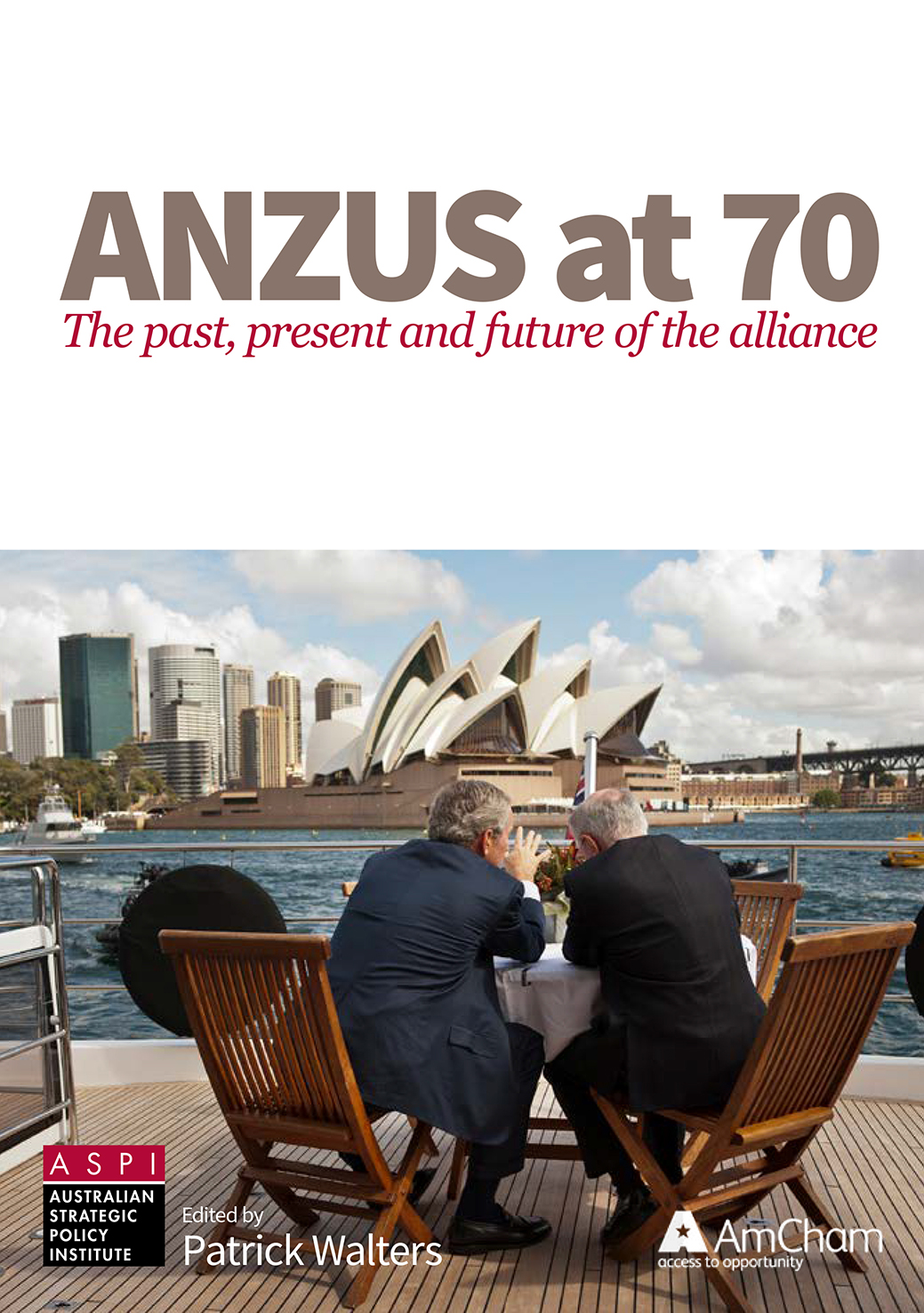ANZUS at 70: The past, present and future of the Alliance
Presented by AmCham and ASPI
Please click here to download the report
Please click on this link to visit ASPI
Webinar featuring guest speakers is available here.
- Peter Jennings PSM, Executive Director ASPI
-
Dr Brendan Nelson AO, President, Boeing Global
-
Michelle Gratton AO, Professorial Fellow, University of Canberra, Chief Political Correspondent at The Conversation Media Group
-
Lisa Sharland, Adjunct Senior Fellow at the Stimson Center with the Protecting the Civilians in Conflict Program
-
April Palmerlee, CEO, AmCham
ANZUS at 70: The past, present and future of the Alliance
By Patrick Walters
The ANZUS Treaty was signed on 1 September 1951 in San Francisco. It was the product of energetic Australian lobbying to secure a formal US commitment to Australian and New Zealand security. At the time, the shape of Asian security after World War II was still developing. Canberra worried that a ‘soft’ peace treaty with Japan might one day allow a return of a militarised regime to threaten the region.
ANZUS at 70 explores the past, present and future of the alliance relationship, drawing on a wide range of authors with deep professional interest in the alliance. Our aim is to provide lively and comprehensible analysis of key historical points in the life of the treaty and indeed of the broader Australia–US bilateral relationship, which traces its defence origins back to before World War I.
ANZUS today encompasses much more than defence and intelligence cooperation. Newer areas of collaboration include work on cybersecurity, space, supply chains, industrial production, rare earths, emerging science and technology areas such as quantum computing, climate change and wider engagement with countries and institutions beyond ANZUS’s initial scope or intention.
The treaty remains a core component of wider and deeper relations between Australia and the US. This study aims to show the range of those ties, to understand the many and varied challenges we face today and to understand how ANZUS might be shaped to meet future events.
